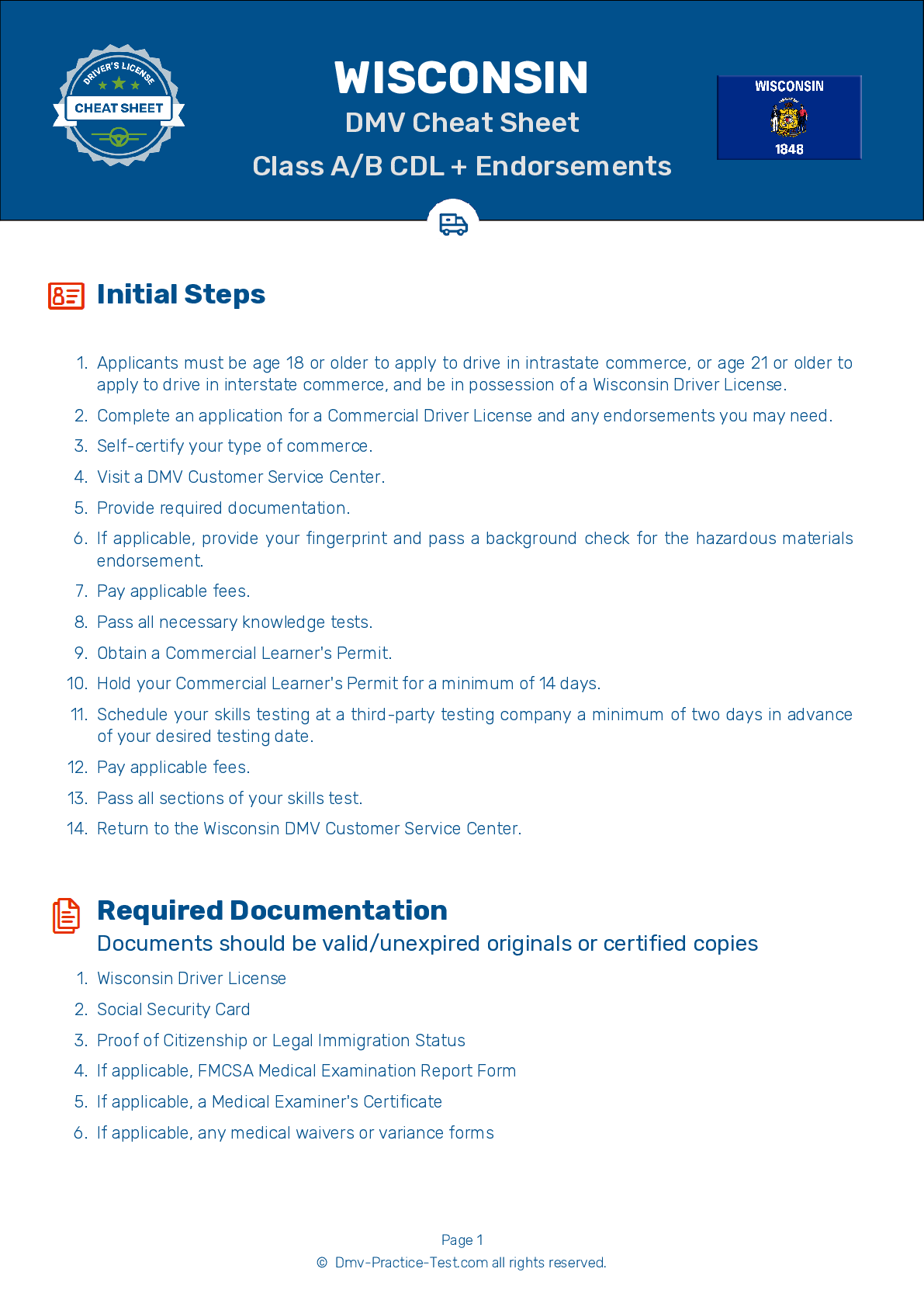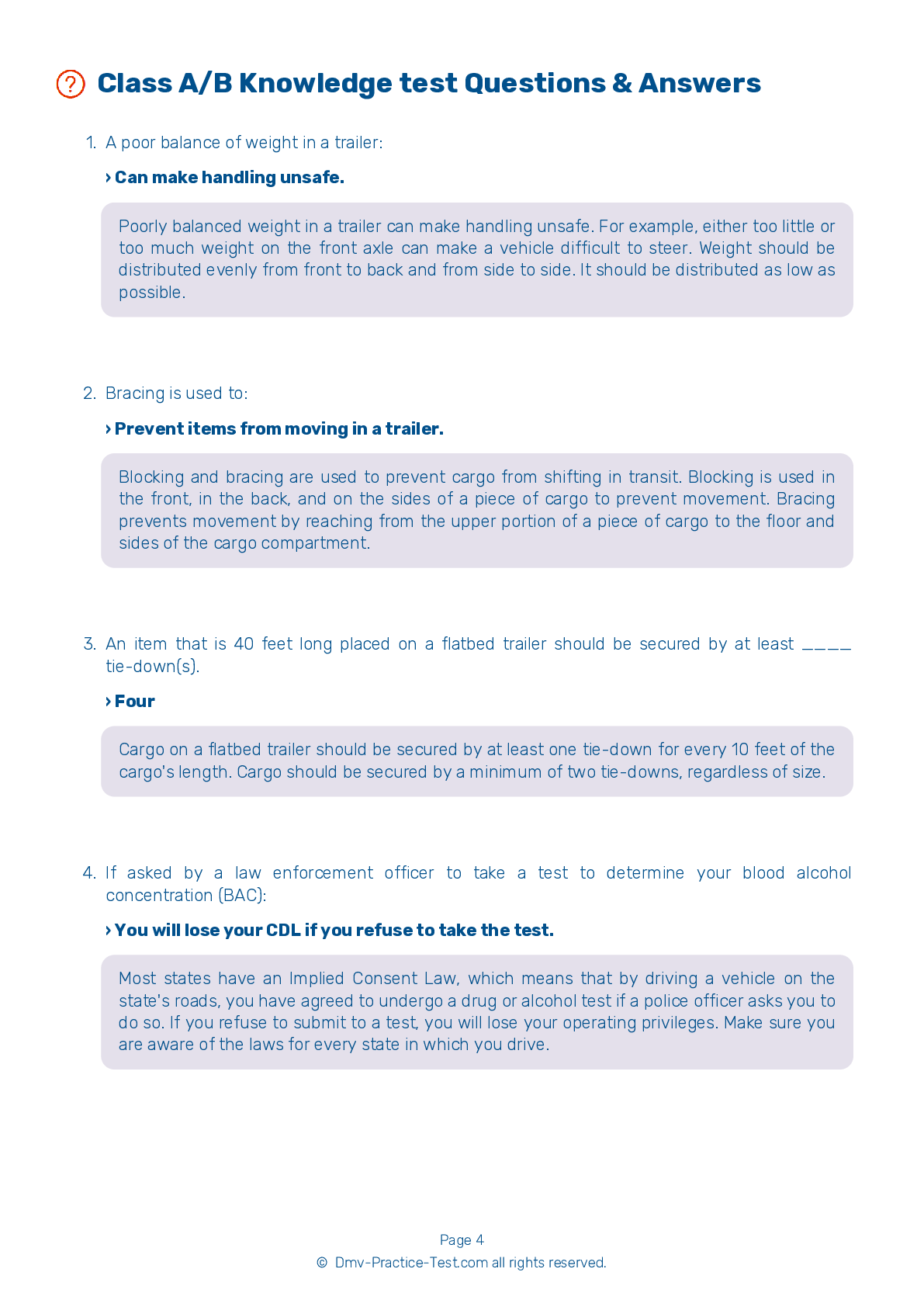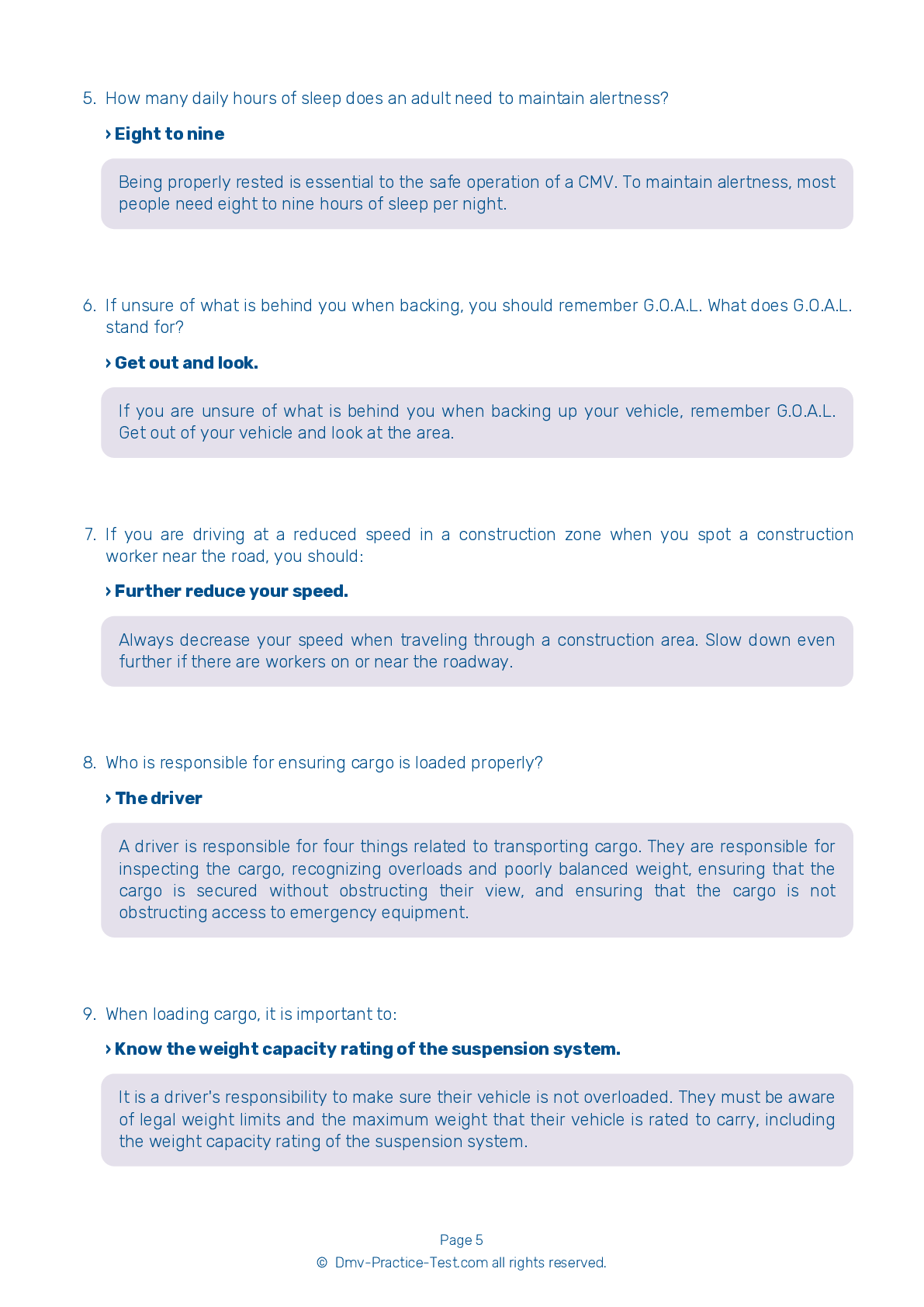Class A Driving Test | Wisconsin 2026 #1 Page 4 of 7
Train for FREE online with our Wisconsin class A license test. The official exam test consists of several obligatory parts, with all of them checking your knowledge of different blocks of road rules. If you need to obtain a WI CDL class A permit in 2026, practice as much as possible. Free sample tests published on our website will help you check and improve your knowledge and boost your grades. Please bear in mind that CDL class A requirements may vary from state to state.
22 . When checking the springs during a vehicle inspection, do all of the following, except:
When checking the springs as part of the vehicle inspection test, you should look for missing, shifted, cracked, or broken leaf springs, as well as broken or distorted coil springs. If the vehicle is equipped with torsion bars, torque arms, or other types of suspension components, ensure that they are not damaged and are mounted securely.
23 . What can happen if the air pressure gets too low in an air brake system?
Pressing and releasing the brake pedal unnecessarily can let air out of the braking system faster than the compressor can replace it. Air brakes may cease to work effectively if the pressure becomes too low.
24 . When checking your tires, which of the following is not an issue to correct?
Problems to check for when inspecting tires include: air pressure that is too low or too high; using radial and bias-ply tires together; tread depth of less than 4/32 of an inch in major grooves on front tires; and tread depth of less than 2/32 of an inch on all other tires.
25 . When doing an inspection, ensure that the brake pads are:
When inspecting a vehicle's brakes, you should make sure the shoes and pads do not have oil, grease, or brake fluid on them.
26 . Bracing is used to:
Blocking and bracing are used to prevent cargo from shifting in transit. Blocking is used in the front, in the back, and on the sides of a piece of cargo to prevent movement. Bracing prevents movement by reaching from the upper portion of a piece of cargo to the floor and sides of the cargo compartment.
27 . Do not operate a vehicle if any brake drums have cracks that are larger than ____ of the width of the friction area.
Before beginning a trip, it is important to check the brake drums during your walk-around inspection. It is unsafe to drive if any brake drum has a crack more than one half of the width of the friction area.
28 . Which of the following is not an example of a distracted person that motorists should be worried about?
Drivers who are holding conversations with others may not be paying full attention to the road and may make unsafe moves. Children do not always pay attention to traffic and may dart into the road without looking. Exercise caution when driving near road workers. This helps to keep the workers and other distracted drivers safe.
See the exact questions that will be on the 2026 Wisconsin DMV exam.
99.2% of people who use the cheat sheet pass the FIRST TIME
Lillian MCcranie explains how our CDL study guide was helpful in passing the exam and recommends it to everyone.
Cameron tells us how he purchased the CDL exam, and found it to be a useful tool which helped him pass the exam and find a job.



